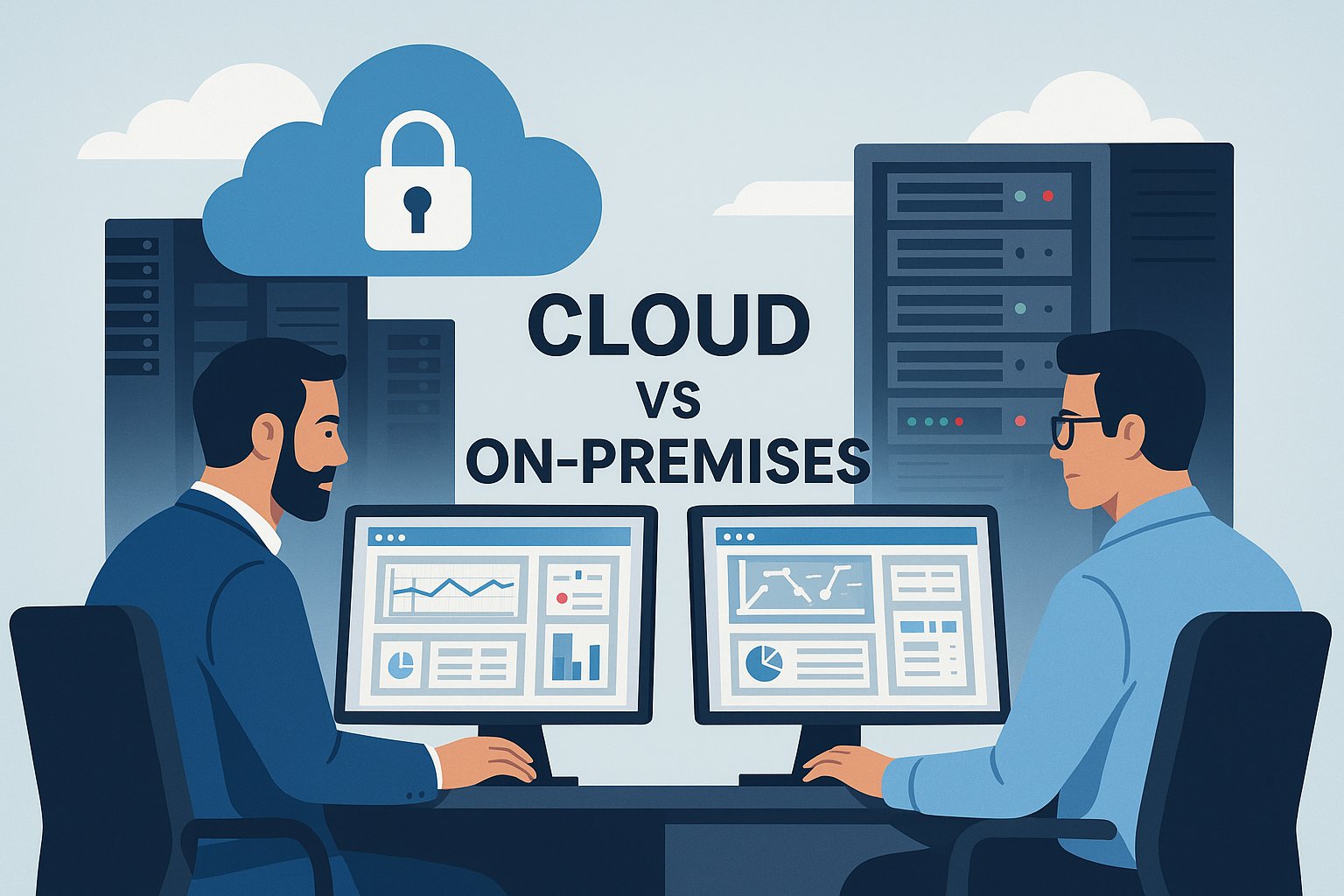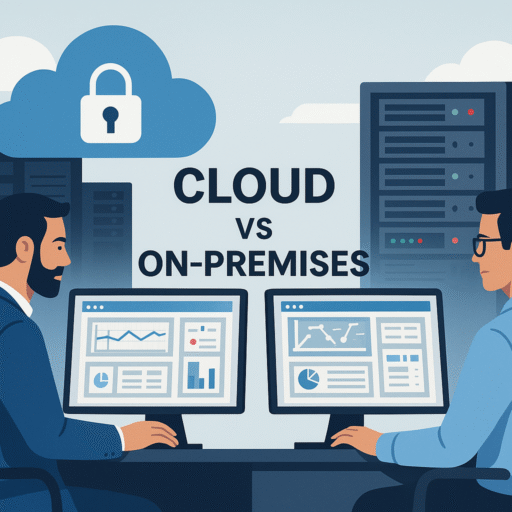Table of Contents
Introduction
As industries all over the globe embrace digital transformation, supervisory control and data acquisition (SCADA) systems like VTScada have established themselves as foundational tools for operational excellence. Whether managing complex utility networks, manufacturing operations, water treatment facilities, or energy management systems, VTScada provides real-time visibility and control over critical assets and processes. Yet, organizations implementing VTScada are confronted with a pivotal decision: Should their SCADA solution be deployed on-premises, rooted within their own infrastructure, or migrated to a cloud-based platform? This deployment decision profoundly influences not only the performance and scalability of the SCADA environment but also its security posture, ongoing manageability, and overall cost of ownership. Because SCADA systems support essential functions where any lapse in reliability or security can have significant consequences, selecting the right architecture is more than a technical exercise—it’s a strategic mandate. By examining both deployment options, organizations can better understand how to deliver seamless real-time monitoring and control with SCADA in environments where uptime and protection of sensitive data are paramount.
The debate between cloud and on-premises deployment transcends technology and hardware. It becomes a question of business alignment—balancing IT investments with organizational objectives, regulatory mandates, and operational priorities. Each deployment model, whether contemporary cloud or traditional on-premises, brings distinct advantages and faces unique hurdles, all of which must be rigorously evaluated in the context of your industry’s needs and your company’s digital maturity.
This comprehensive guide explores the primary factors influencing VTScada deployment strategies: performance, scalability, cost, security, and ongoing management.
Performance Considerations
Performance sits at the heart of all SCADA implementations. When operators and engineers rely on instantaneous feedback, data delays or sluggish command execution can cause more than inconvenience—they may escalate to expensive downtime, safety incidents, or even regulatory violations. In this context, on-premises VTScada deployments give organizations maximum control over every hardware and network element. The servers, storage, and network topology can be tailored to the precise needs of the industrial process. Organizations reduce latency and maximize throughput for real-time control by co-locating SCADA servers close to operational assets, making on-premises the traditional choice for mission-critical, low-latency environments. Additionally, organizations can optimize bandwidth, directly monitor server performance, and implement redundancy without sharing resources with outside users.
However, rapid advances in cloud computing have begun to dissolve these historic performance barriers. Today’s cloud providers deliver high-performance compute instances, custom network configurations, and specialized data acceleration techniques for demanding industrial workloads. For organizations with geographically dispersed sites, cloud-based deployments can leverage regional data centers, optimized network routing, and edge computing to ensure speedy, highly available access to SCADA data wherever needed. Leading technology analysts, including those at Gartner, point out that cloud performance can rival—and sometimes even outpace—traditional on-premises solutions with the right network connectivity and redundant architectures.
Scalability and Flexibility
The transformative agility of cloud deployments becomes most evident when scalability is paramount. With just a few clicks—or through automated scaling policies—organizations can instantly increase or decrease compute and storage resources, adapting to unpredictable operational shifts, rapid geographic expansion, or evolving compliance requirements. This fluid resource management is particularly valuable during project launches, seasonal activity fluctuations, or in environments where long-term demand projections are uncertain. Cloud providers offer nearly limitless scalability, with resources available on demand. Hence, organizations never have to worry about running out of capacity and can test new capabilities with minimal effort or risk.
In contrast, scaling an on-premises VTScada system is complex, time-consuming, and resource-intensive. Businesses must forecast future needs years in advance, purchase new hardware, provision rack space, and coordinate with IT teams to install, configure, and validate new components. If they over-provision, capital investment may sit idle; under-provisioning creates performance bottlenecks and limits project growth. According to a TechRepublic report, organizations increasingly adopt the cloud model to tap into on-demand elasticity, paying only for what they use and rapidly iterating as their requirements evolve—attributes extremely difficult to replicate in purely on-premises settings.
Cost Implications
Decisions concerning platform deployment fundamentally affect the total cost of ownership over the system’s lifecycle. On-premises solutions demand significant upfront capital investment in hardware, network equipment, and data center space. Budgets must account for initial installation and ongoing costs—licensing, facility maintenance, electricity, cooling, replacement hardware, and annual support contracts. These expenses create substantial barriers for smaller organizations or businesses seeking to avoid large capital outlays.
Conversely, with cloud-based VTScada, costs become more predictable and aligned with actual use. Organizations shift from a CapEx-centric approach to an OpEx model, with monthly or annual subscription fees replacing expense spikes and maintenance surprises. This pay-as-you-go framework helps organizations of all sizes efficiently forecast budgets while reducing financial risks linked to hardware depreciation or surplus inventory. The cloud’s built-in economies of scale can lower costs by pooling resources across thousands of customers and minimizing downtime through proactive, automated maintenance.
Security and Compliance
Security and regulatory compliance are non-negotiable for organizations operating critical infrastructure, handling sensitive information, or subject to strict legal mandates. Deploying VTScada on-premises grants organizations comprehensive control over security protocols, from firewall management and physical access controls to custom auditing and incident response processes. This hands-on approach is often the preferred—and sometimes required—model for entities in highly regulated sectors such as government, energy, and pharmaceuticals, where data must remain within tightly controlled jurisdictions and organizations are responsible for every aspect of their security architecture.
Meanwhile, cloud providers are investing heavily in layered security operations, incorporating industry-leading encryption, identity management, multi-factor authentication, and advanced intrusion detection. Working with a reputable cloud provider gives organizations access to dedicated security teams, routine infrastructure testing, and continuous updates to defend against newly discovered threats. Leading cloud platforms maintain compliance with global standards (e.g., ISO, SOC, NIST), simplifying audits and paper trails.
Maintenance and Management
Ongoing management represents one of the greatest differentiators between on-premises and cloud deployment models. Running VTScada on-premises demands a dedicated IT presence to monitor system health and handle recurring tasks such as patch management, system upgrades, data backups, and disaster recovery drills. Troubleshooting hardware failures or capacity shortfalls absorbs valuable time and can force shifts in operational priorities—particularly for organizations with lean technical teams or expanding asset bases. Organizations may need to schedule system downtime for maintenance, which can interrupt operations and require careful coordination.
On the other hand, migrating VTScada to a reputable cloud platform automates many of these traditionally manual tasks. Infrastructure patching, scaling, security updates, and backup routines are increasingly handled behind the scenes, controlled by sophisticated automation tools and overseen by experienced service provider teams. In this model, internal experts can devote more time to higher-value activities, from workflow optimization to data-driven innovation, benefiting from a steady cadence of feature and security enhancements delivered with minimal disruption.
Hybrid Approaches
Recognizing that neither deployment mode delivers universal advantages, many organizations are turning to hybrid models that blend on-premises installations for mission-critical processes and cloud deployments for analytics, reporting, disaster recovery, or remote access needs. This hybrid architecture provides an ideal compromise: sensitive or highly regulated data remains secured within the corporate perimeter, while the public or private cloud delivers the agility and accessible capacity required for growth, backup, or edge scenarios.
With hybrid strategies, organizations can trial new use cases, scale non-critical workloads, or extend services to remote users—all with reduced risk and no need for a wholesale infrastructure overhaul. This flexibility ensures that SCADA platforms remain resilient and adaptive as compliance demands evolve or new operational opportunities arise, ready to support business transformation for years.
Final Thoughts
Ultimately, selecting between cloud and on-premises deployment for a robust SCADA platform like VTScada is a multidimensional decision driven by performance, scalability, cost, security, and ease of management. By mapping these priorities to clear business objectives and technical realities, organizations can confidently invest in the right architecture, promoting operational continuity, efficient growth, and regulatory compliance. A well-chosen deployment model positions teams for today’s complex industrial challenges and ensures ongoing resilience and innovation amid tomorrow’s evolving opportunities.


